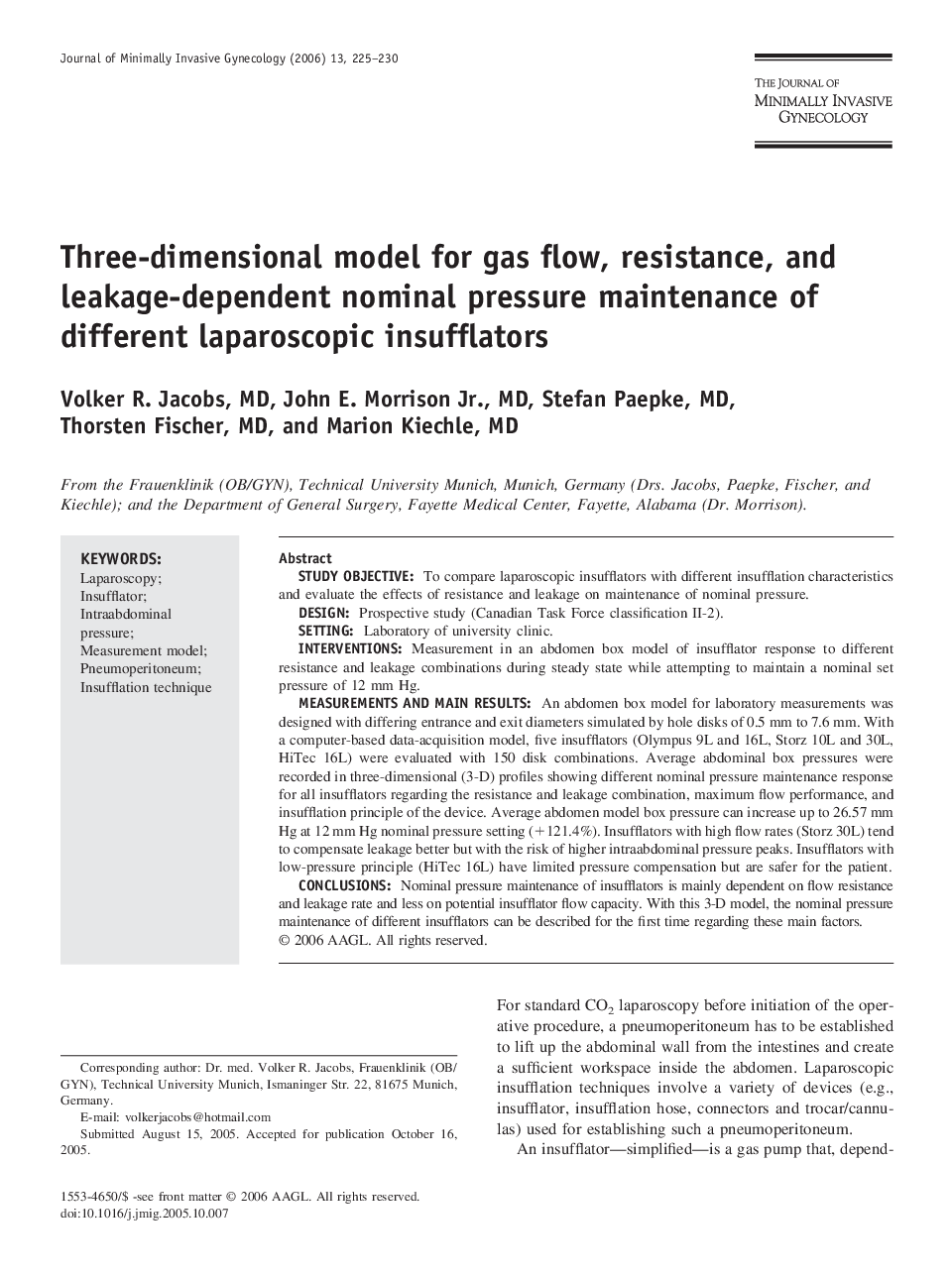| Article ID | Journal | Published Year | Pages | File Type |
|---|---|---|---|---|
| 3962940 | Journal of Minimally Invasive Gynecology | 2006 | 6 Pages |
Study objectiveTo compare laparoscopic insufflators with different insufflation characteristics and evaluate the effects of resistance and leakage on maintenance of nominal pressure.DesignProspective study (Canadian Task Force classification II-2).SettingLaboratory of university clinic.InterventionsMeasurement in an abdomen box model of insufflator response to different resistance and leakage combinations during steady state while attempting to maintain a nominal set pressure of 12 mm Hg.Measurements and main resultsAn abdomen box model for laboratory measurements was designed with differing entrance and exit diameters simulated by hole disks of 0.5 mm to 7.6 mm. With a computer-based data-acquisition model, five insufflators (Olympus 9L and 16L, Storz 10L and 30L, HiTec 16L) were evaluated with 150 disk combinations. Average abdominal box pressures were recorded in three-dimensional (3-D) profiles showing different nominal pressure maintenance response for all insufflators regarding the resistance and leakage combination, maximum flow performance, and insufflation principle of the device. Average abdomen model box pressure can increase up to 26.57 mm Hg at 12 mm Hg nominal pressure setting (+121.4%). Insufflators with high flow rates (Storz 30L) tend to compensate leakage better but with the risk of higher intraabdominal pressure peaks. Insufflators with low-pressure principle (HiTec 16L) have limited pressure compensation but are safer for the patient.ConclusionsNominal pressure maintenance of insufflators is mainly dependent on flow resistance and leakage rate and less on potential insufflator flow capacity. With this 3-D model, the nominal pressure maintenance of different insufflators can be described for the first time regarding these main factors.
